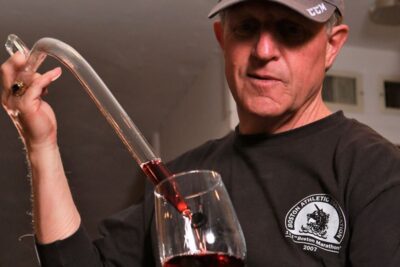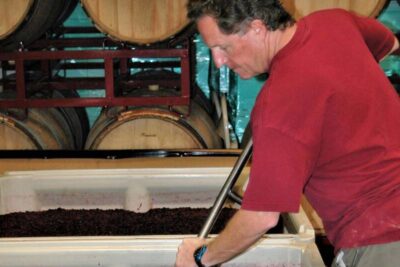
Grenache and Diamonds: Part of the Solution?
Is has been said in the wine world that if you are not part of the solution, you are part of the precipitate. The crystalline substance you can sometimes find on the bottom of a cork, bottle or wine glass is natural and harmless.
“What is that stuff at the bottom of my glass of 2019 Grenache that looks like crushed glass and why is it there?”
Two valid questions. Let me explain.
First, what is at the bottom of your glass of Grenache?
At the bottom of your glass of Grenache are tartrates, or what are sometimes affectionately referred to as “wine diamonds.” (also known as potassium bitartrate and potassium hydrogen tartrate…or, for the chemists keeping score at home, its KC₄H₅O₆. For the bakers in the family, its cream of tartar)
Why is it there?
Just like the other fruit juices you consume, wine contains vitamins, minerals and acids. Therefore, you could argue the case that the reason you drink a lot of wine is because of its nutritional value. Wine does contain Riboflavin and Niacin. So, essentially the more wine you drink, the more you are nourishing your temple with crucial B vitamins.
I love that argument.
I’ve used it.
Unsuccessfully.
So, let’s remove vitamins from the equation.
That leaves us with minerals and acids.
The three main minerals in wine are potassium, magnesium and iron.
The three main acids in wine are tartaric, malic and citric.
All wines have dissolved tartaric acid in them. The solubility of tartaric acid is temperature dependent. Below 45° F any remaining tartaric acid will bind with the naturally occurring potassium to form crystalline deposits. These fall out of solution to the bottom of the bottle. Hence, the “wine diamonds” in the bottom of your glass.
There is a process to eliminate these tartrates, or “wine diamonds,” from ever getting to your glass. It is called cold stabilization. In this process the temperature of the wine is lowered to <45° F degrees for a couple of weeks. The crystals form, fall out of solution and the wine is then sterile filtered before bottling.
I do not cold stabilize my wines. Some say that it mutes the natural acids and diminishes its aging capacity. I tend to agree with this theory.
I don’t sterile filter my wines. I feel sterile filtering strips the soul and the natural flavor profile out of the wine. That’s my opinion and I’m sticking with it.
So, now you know what it is and why it’s there.
Some wine judges, academics and sommeliers view “wine diamonds” as a sign of quality. It indicates that the wine has not been over processed or manipulated. Others disagree and don’t like the aesthetics.
These “wine diamonds” are harmless and tasteless. If you are off put by the appearance, simply pour the wine through a screen or cheesecloth or decant it.
Grenache and Diamonds.
You never knew you had it so good.

